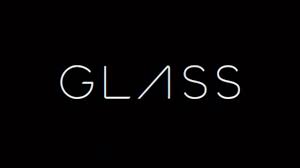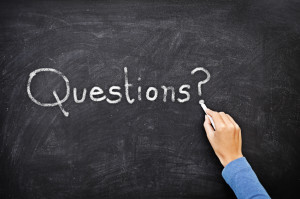NOTE: If you don't wear glasses, please scroll to the bottom of this post and tell me what you would like to know about using Google Glass for historical research.
 Prescription eyeglass wearers can wear Google Glass 2 ways:
Prescription eyeglass wearers can wear Google Glass 2 ways:
1. You can purchase prescription-ready frames for $224.
Price does not include prescription lenses.
2. You can create 3-D-printed plastic clips to attach Glass to your existing eyeglass frames.
These clips cost between $1-$10 to make, plus shipping if you don’t own a 3-D printer.
In this post you will learn about the pros and cons of each option.
 3-D-Printed Plastic Clips
3-D-Printed Plastic Clips
Just before I purchased Glass, TechCrunch announced that eyeglass wearers could attach Google Glass to their eyeglass frames with custom clips.
I decided to try the plastic clips and purchased Glass without prescription-ready frames.
When my Glass arrived, Tim followed the directions posted by Adafruit and measured the Glass unit and my existing eyeglass frames with digital calipers.
Tim used his measurements and Autodesk 123D to design my clips. When finished, he uploaded his design to Sculpteo.com and ordered the clips.
It cost $6.98 for the clips plus $6.50 for shipping. The clips arrived 1 week after we ordered them.
 Clip Pros & Cons
Clip Pros & Cons
Pros
1. Clips are cheap.
At $13.48 with shipping, they save eyeglass wears approximately $700 (the cost of the frames with prescription lenses).
2. Clips are lightweight.
My clips weigh 2 grams.
Cons
1. Clips require exact measurement.
You must measure your eyeglass frames with exact precision. If you don’t, the clips won’t hold your Glass steady or in the right position.
2. The color of your clips may not match your eyeglass frames or Glass.
It is hard to judge the exact color of the plastic online.
The price of your clips will fluctuate depending on the color of plastic you choose.
 My Thoughts on Clips
My Thoughts on Clips
I ordered 2 different sets of clips and neither set worked perfectly.
The first set proved too big. Tim used this set to refine his measurements.
The second set held Glass better.
The clips held Glass securely to the side of my eyeglass frames. However, every time I nodded or turned my head the Glass optics fell out of its optimal viewpoint.
After 2 attempts and 1 month I gave up on the clips and ordered a pair of prescription Glass frames.
I want to use Glass as a research tool. I need it to hold steady when I take a picture or look at an object.
Google Glass Prescription Frames: What You Should Know
Finding an Optician
Google recommends that you use a preferred provider to fit your prescription-ready frames with lenses.
I went to my regular optometry shop as Google listed someone in Connecticut as my nearest “preferred provider.”
My optician loved the fact that I had Glass. She had never seen one before. Initially she felt confident that she could fit my Glass frames with lenses.
But then she looked at the box.
 Prescription Specifications
Prescription Specifications
Google recommends a prescription lens range of -4D to +4D for its frames.
These specifications presented a problem for me.
The prescription lens required for my right eye fell outside of the recommended range.
The optician made several phone calls to try and find out whether the recommended prescription range had to do with fitting the lens inside the frame or if a greater-than-recommended prescription strength would affect my ability to see the Glass optics.
After a few hours of inconclusive research she asked me to find another optician.
Fortunately, Tim works for Google and has several coworkers with both Google Glass and poor eyesight. He asked them where they had their lenses made.
They all went to Central Square Eye Care, an optical shop in Cambridge, MA.
 Outside Recommended Prescriptions
Outside Recommended Prescriptions
An experienced optician can fit Google Glass prescription-ready frames with lenses that exceed Google's recommended range.
Optician George Skelton made mine.
It took a bit of trial and error, but 2 weeks after I dropped off my frames, Skelton called to tell me he had succeeded.
My new lenses are made of a new, ultra-lightweight and thin material. It took my eyes several hours of continuous wear to adjust to seeing out these new lenses.
Unless you look at the top of my frames, you cannot tell that my right eye sports a thick lens. The Glass optics hide the thickness from the front and side views.
Total Additional Cost
Eyeglass wearers can expect to pay a premium if they want to sport Glass with prescription lenses.
It will cost you $1500 for Glass, $224 for the frames, and hundreds of dollars more for the lenses.
My lenses cost $500.
 What Would You Like to Know?
What Would You Like to Know?
What would you like to know about Google Glass?
Is there a specific capability you wonder about and would like me to test?
Send me an e-mail, tweet, or leave a comment.
My experiments with manuscripts commence at the Massachusetts Historical Society on May 6, 2014.



